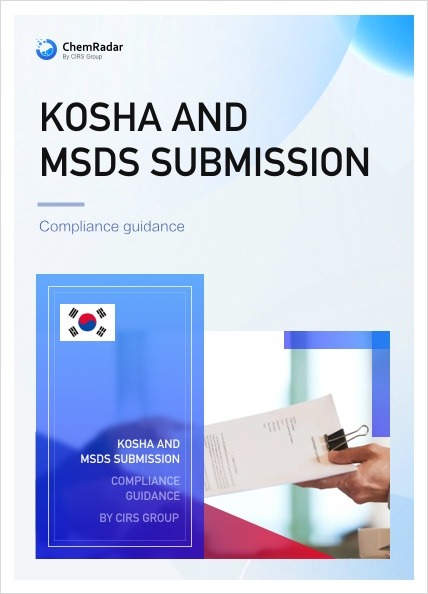5. CBI Application
(1) Substances not applicable to CBI application:
The following substances are not required to apply for CBI under Article 16 of the MoEL No. 2023-9:
Note: Ingredients that are generally regarded as posing significant hazards to human health are not allowed to conduct CBI application.
(2) Materials required for CBI application:
- Documents to be submitted: MSDS in Korean language, POA, Information sheet for CBI Claim, LOC (required if its content below 100%)
- Information required
- Supporting Information: Information that meets the criteria for business confidentiality;
Non-disclosure: Who is aware of the substantial information regarding chemical substances under a CBI application?
Confidentiality Management: Does the company manage its employees by having them sign confidentiality agreement and using computers equipped with security systems? Economic Benefits: What are the potential losses for the company if the business confidential information on chemical substances is disclosed? What advantages might this confer on competitors?
- Alternative Information (Chemical Substance Name and Content)
Alternative name (generic name): Please refer to the Guidelines for the Preparation of CBI Application and the Management of Application Materials published by the Ministry of the Environment.
Alternative content (%):
- If the component content below 25%, alternative content may be ±10%;
- If the component content ≥20%, the alternative content may be ±20%;
- The content range of non-CBI component content shall be ±5%.
- Names and contents of hazardous components to conduct CBI application, as well as the health hazard, environmental hazard and physical hazards of these components;
- Names and contents of other non-hazardous components (or only disclose hazardous components in MSDS, submission of MSDS and LOC);
- MSDS compiled in Korean language;
- Other documents required by the MoEL (information of the applicant, product identifier, activity type (manufacture/import), etc.)
Note: ① and ⑥ are not required for R&D chemical substances or mixtures when applying for registration of alternative substances.
(3) Review period: 1 month (R&D products: 2 weeks)
(4) Submission result: approval code for CBI
Sample of regular products:

Sample of R&D products:

(5) Validity period and extension period:
The validity period for CBI protection is 5 years. Applicants may apply for 5-year extension of the validity period within 30 days before its expiration.
(6) Modification of MSDS: Section 3 of MSDS should be modified if products containing CBI substance.







